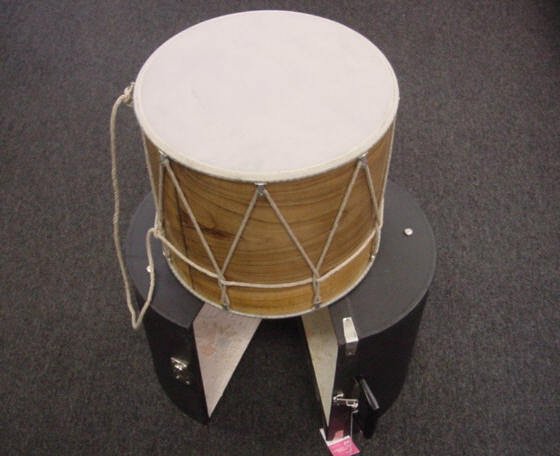About Musical instruments of the Mountain Jews
1.Aziatskay garmoshka (lit. "Asian accordion"; also called "gar-mon" or "ghumuz" in Juhuri and Qumiq), adopted by musicians from eastern Caucasus (also Azerbaijan and western Caucasus) in the late nineteenth century, is a small portable instrument tuned in the key of B, shaped like a box with metal reeds which are vibrated by air from below.
The right-hand keyboard (two and a half octaves) is similar to the accordion, although substantially smaller.
The role of the left hand is to play bourdons (drone tones) while the right hand plays the melody. The northern garmoshka has left-hand keys for playing chords and bass notes like the accordion.

2.Balaban ("damkash" in Juhuri from "dam" = pitch , "kash" = to pull or draw, a word that also refers to the player of this instrument, whose role is to play the bourdon; this instrument is called "duduk" in Armenian) is a diatonic double-reed oboe. It produces a continuous drone (through circular breathing) throughout the entire piece. In ensembles having more than one damkash, only one of the players plays the bourdon, the rest play the melody.
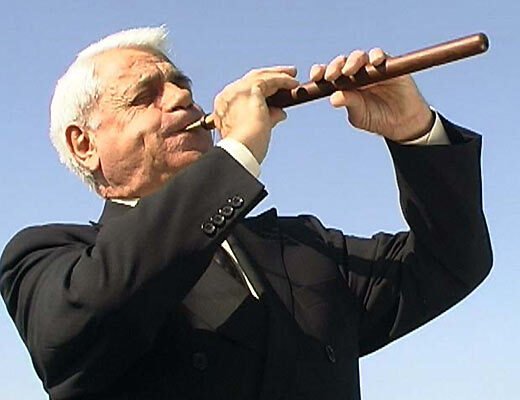
3. Zournas is a double-reed oboe very similar to the instrument of the same name which is found throughout the Near East.
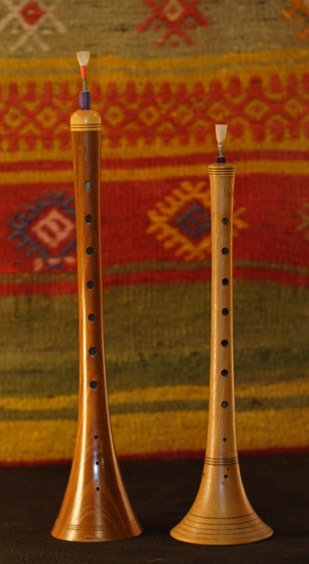
4. Komoncha is a spike fiddle of four strings. Widespread in Turkey, Armenia, Azerbaijan, eastern Caucasus and Persia, the instrument is decorated with pieces of bone and oysters. The player holds the instrument on his knees, perpendicular to his body, moving the instrument sideways in order to create special effects such as glissando and microtones.
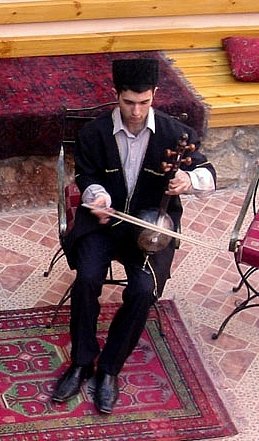
5.Tar, the Caucasian version of the plucked longneck lute of ancient Persian origin, is made of chestnut and wild berry wood. The Caucasian tar has eleven strings arranged in a unique manner, invented by Mirza Sadig Asad from Azerbaijan in the nineteenth century. The use of both double and sympathetic strings set the Caucasian tar apart from its Persian/Turkish counterpart. The Caucasian tar is held, as in Turkey, against the chest.
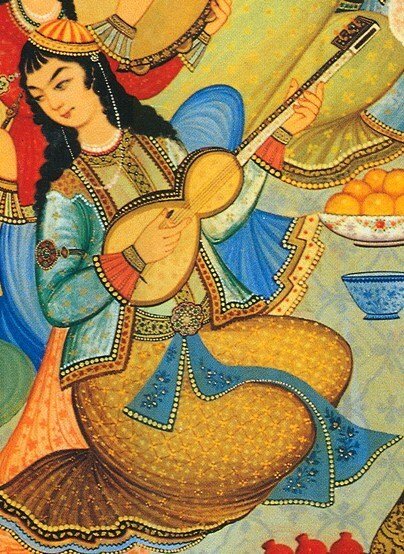

6. Ghovol (called "nagara" in Azeri) is a cylindrical drum consisting of a wooden frame and two membranes (today made of plastic). It is held under the right arm and played with both hands. This instrument is sometimes called "tap" in northern Caucasus
